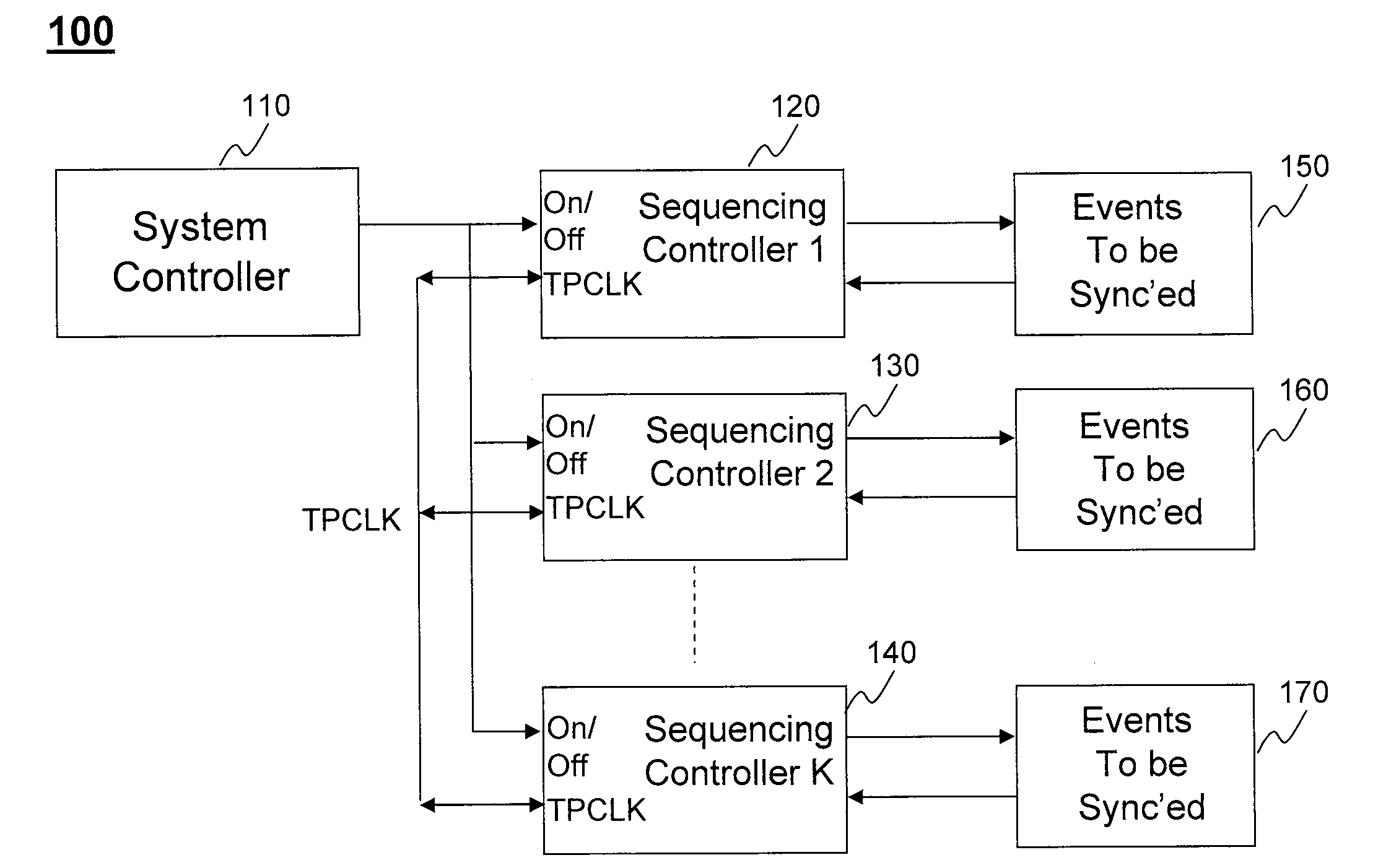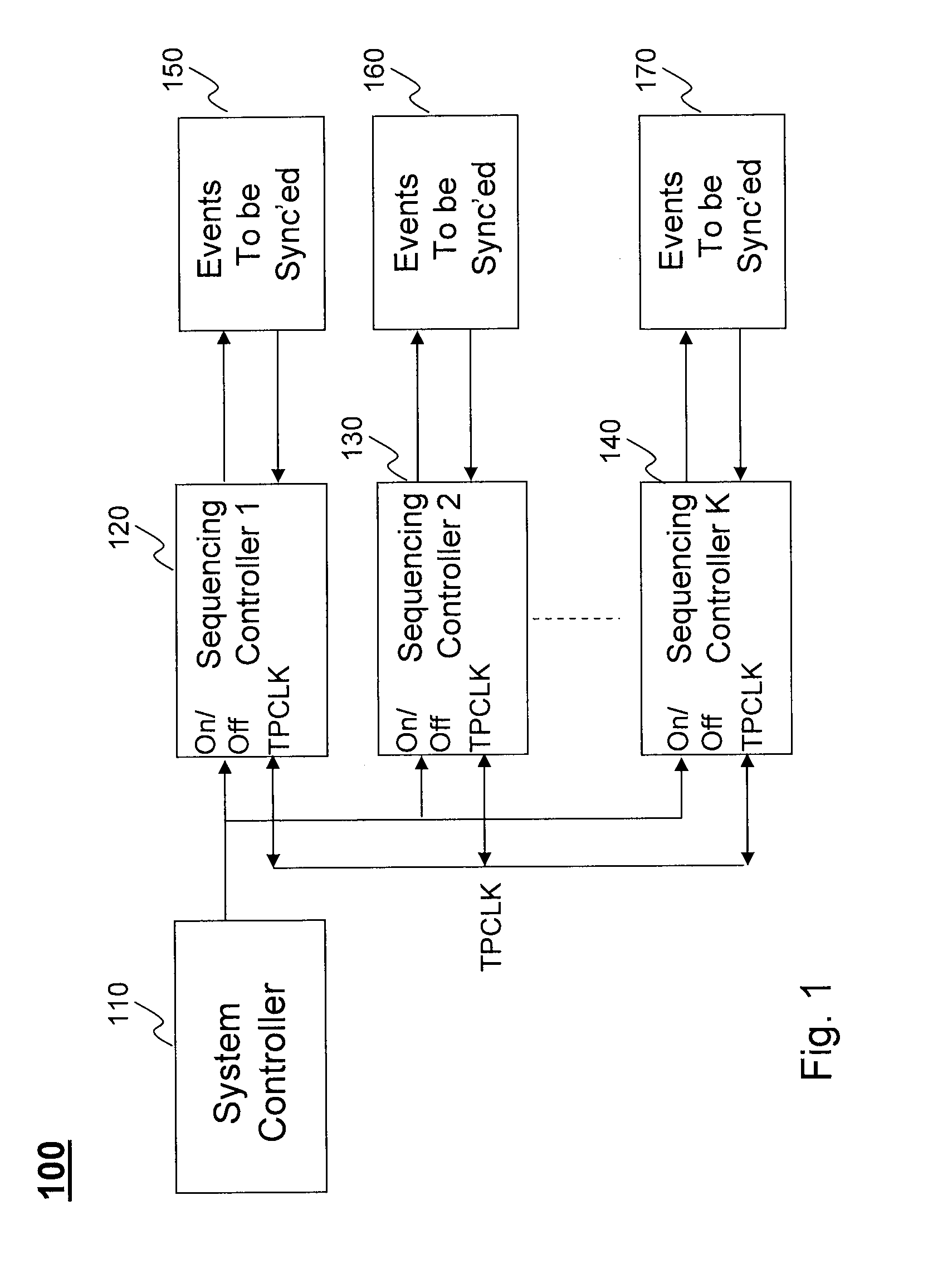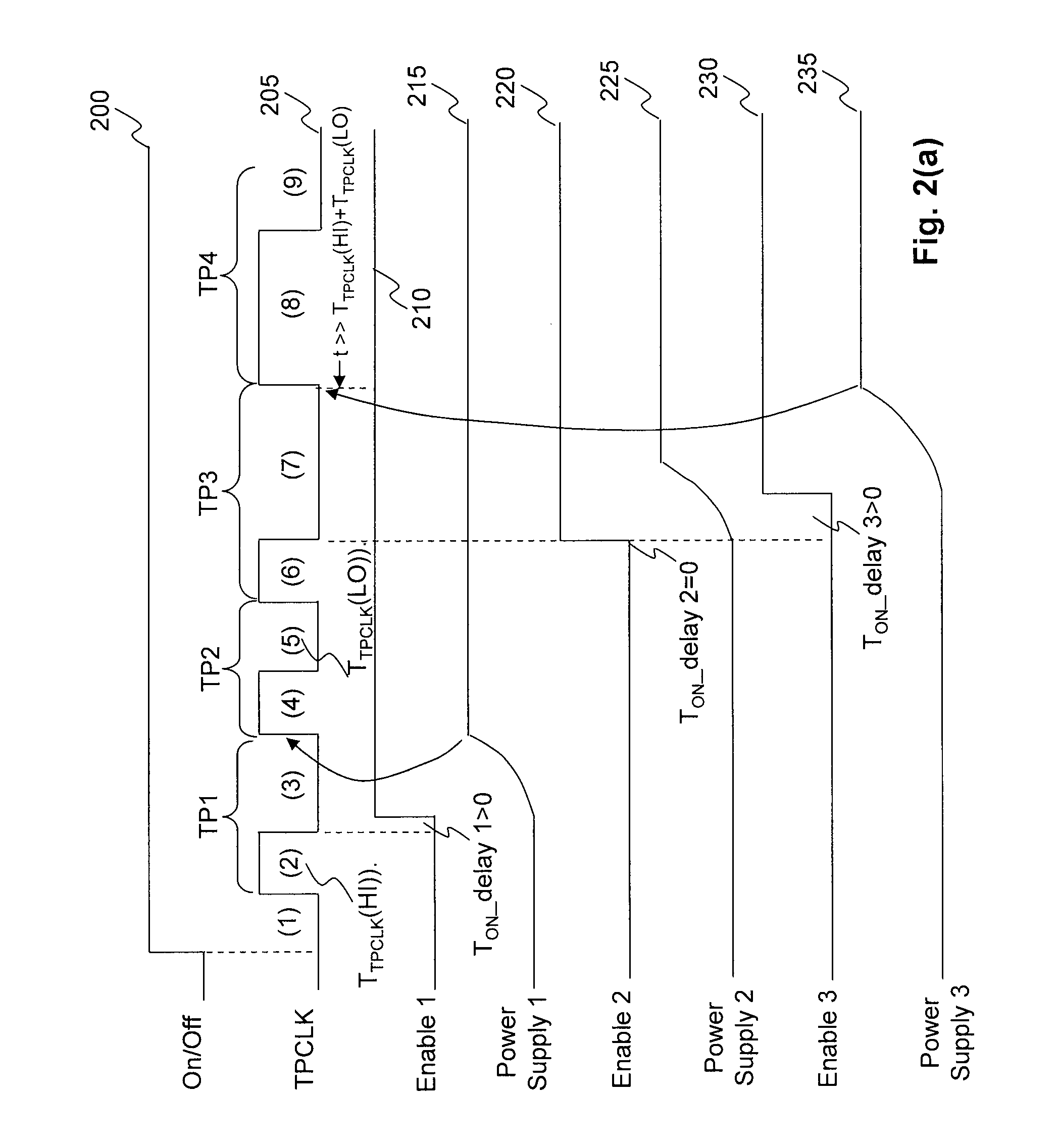Autonomous multi-device event synchronization and sequencing technique eliminating master and slave assignments
a multi-device, event synchronization technology, applied in the direction of transmission, instruments, electric digital data processing, etc., can solve the problems of latency between the last sequenced event, additional circuits adding complexity, waste of resources,
- Summary
- Abstract
- Description
- Claims
- Application Information
AI Technical Summary
Problems solved by technology
Method used
Image
Examples
Embodiment Construction
[0020]The present teaching discloses a sequencing control method for event synchronization among a plurality of devices. Specifically, the present teaching describes a sequencing method and system that uses only one node or a single wire without traditional master device and slave device designations. The disclosed method and system also provides a sequencing approach that is self-actuating and self-terminating as soon as all turn-on or turn-off events have been achieved, eliminating the need for “start” and / or “stop” signals. This allows a control of enable / disable event signals in an arbitrary number of sequence positions.
[0021]The present disclosure offers a novel single wire sequencing system and protocol. The single wire (or node) is connected to all devices requiring event synchronization. The electrical activity on the single wire resembles that of an electronic clock. Thus, for ease of discussion, the electrical activity on the single wire is referred as “Time Position Clock...
PUM
 Login to View More
Login to View More Abstract
Description
Claims
Application Information
 Login to View More
Login to View More - R&D
- Intellectual Property
- Life Sciences
- Materials
- Tech Scout
- Unparalleled Data Quality
- Higher Quality Content
- 60% Fewer Hallucinations
Browse by: Latest US Patents, China's latest patents, Technical Efficacy Thesaurus, Application Domain, Technology Topic, Popular Technical Reports.
© 2025 PatSnap. All rights reserved.Legal|Privacy policy|Modern Slavery Act Transparency Statement|Sitemap|About US| Contact US: help@patsnap.com



